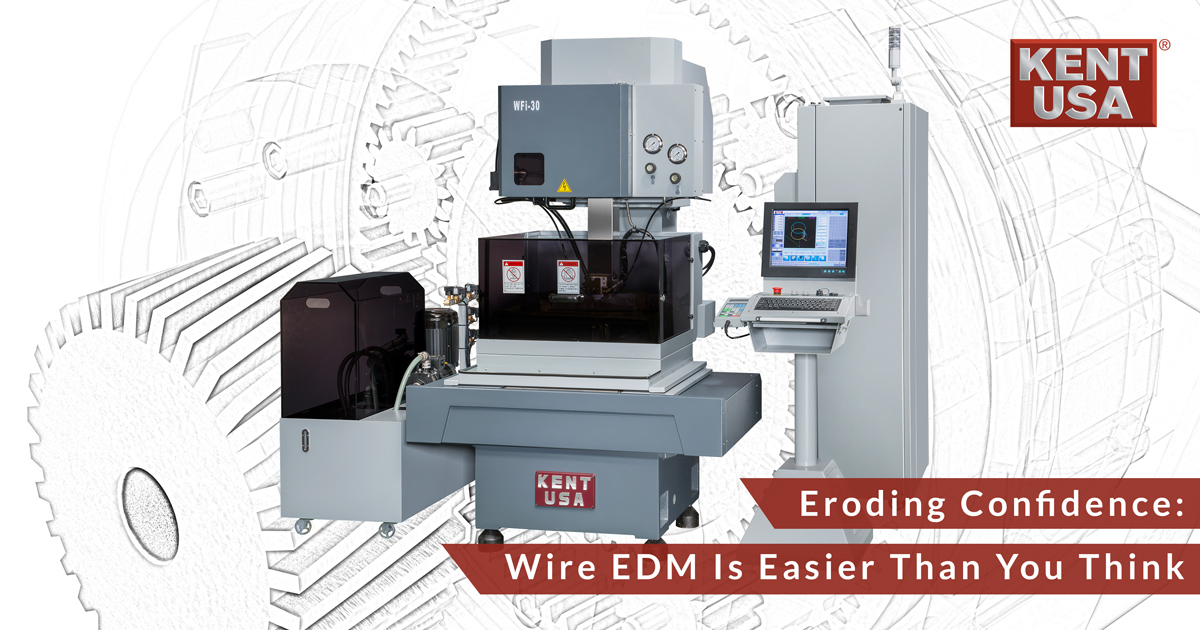Do you send work out to wire EDM houses? For instance, close tolerance through-holes? Narrow slots and keyways? Long, complex part profiles, or micro-sized cutouts? These are just a few examples of the parts and part features where wire EDM shines. If you’ve been kicking around the possibilities of owning your own machine, here’s a brief primer on how wire EDM works, along with a few compelling reasons to invest in one:
Wire EDM: How it Works
Simply put, you can think of wire EDM as a highly accurate bandsaw, one with a blade (wire) measuring 0.010″ or so in diameter. It shoots tiny lightning bolts through a water or oil insulator called a “dielectric,” using electrical energy to blast away tiny bits of metal. The wire electrode is consumed during the process, but is continuously replenished from a rotating spool. Kent USA offers flushing-type and submerged models, as well as machines large enough to machine a coffee table. All are easy to use, with features like auto-threading and advanced control features.
What Can I Make With It?
Wire EDM can “burn” any electrically-conductive material. This includes aluminum, titanium, hardened tool steel, and even carbide. Accuracy to “tenths” is possible, as are very fine surface finishes. It has broad applications. For example, the tool and die industry uses wire EDM for stamping and extrusion dies. Medical and aerospace firms use it to cut intricate features in superalloys and stainless steel. Finally, electronics manufacturers might load up hundreds of small workpieces and come back the next day to finished parts.
The Big Picture
You might be thinking: we’re a machine shop, not a tool and die maker. Yes, we do send work out for EDMing sometimes, but that doesn’t justify buying a machine. But have you considered that having a wire EDM in house would not only reduce costs, but shorten lead-times? That, and an EDM-capable shop is going to attract work and customers that might otherwise pass you by. It’s a non-contact process, so cutting forces are non-existent. There’s no special tooling needed. Machining after heat-treat is not a problem. The message is clear. Wire EDM is no longer a nice-to-have, it’s expected. Do your shop a favor and check it out.
Share this article:


